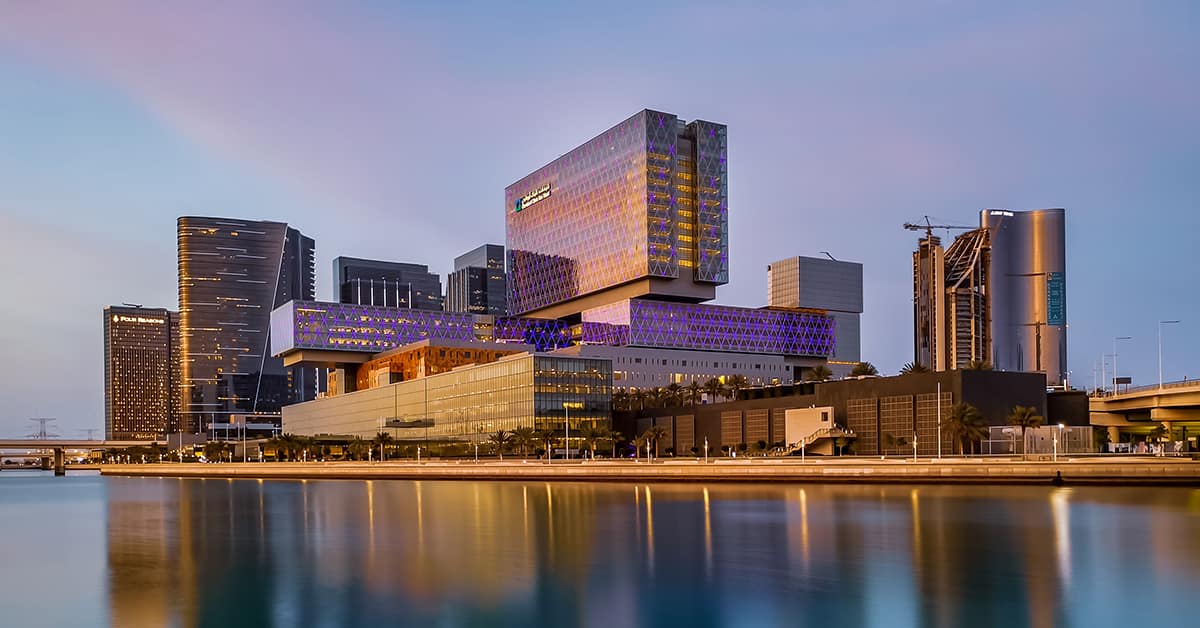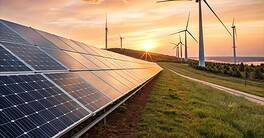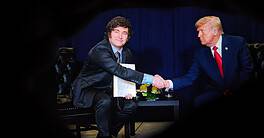In 50 years, the UAE has gone from a desert with a small pearl fishing industry to one of the wealthiest economies in the world.

On December 12, 2021, Abu Dhabi hosted the final race of the Formula One World Championship. The event took place on artificially constructed Yas Island. Bleachers on the finish line welcomed the most important guests, who were dressed in traditional white robes. The air was a mix of the fragrance of oud and the smell of burnt tires.
To everyone’s surprise, Red Bull Racing’s Honda driver Max Verstappen beat Mercedes’ Lewis Hamilton during the final lap. Fireworks matching the colors of the Emirati flag burst to celebrate what international sports commentators called a historic race. In the VIP lounge, Mohamed Omeiri, a 31-year-old local businessman, looked satisfied, saying, “I am proud. These events are great publicity for Abu Dhabi.”
Gulf countries have been spending hundreds of millions of dollars to host global events in the last few years. Expo 2020 in Dubai, the International Defence Exhibition and Conference scheduled for February 2023 and the upcoming COP28 climate conference are among the most prestigious taking place in the United Arab Emirates (UAE).
A few miles from the Formula One circuit, Al Maryah Island showcases Abu Dhabi’s business ambitions. Brand new skyscrapers, five-star hotels, a luxury mall and hundreds of offices cover 114 hectares (0.44 square miles) of reclaimed land.
Extending across the island, connected by several bridges to the main island of Abu Dhabi, the Abu Dhabi Global Market financial center (ADGM) is a gateway to the UAE for many foreign firms. It boasts over 3,400 registered licenses and $75 billion in assets under management since opening in 2015 and continues to attract foreign companies. In February, Swiss digital asset platform SEBA Bank opened an office there. The year before, JP Morgan and Sberbank also established a presence.
Sadiq Hussain, the ADGM’s head of global business development, says hundreds of companies and investment funds have passed through his office. According to him, Abu Dhabi is unique in the world. “From here, you can do business with Asia in the morning, Europe in the afternoon and America in the evening,” he says, claiming that 70% of the world’s GDP is less than three hours away.
One advantage is that Al Maryah Island is a free economic zone. Aside from tax incentives, this also means the general Emirati legal system doesn’t apply. To facilitate business, the ADGM prefers procedures that resemble English common law. “Businessmen don’t like uncertainty and prefer to operate in a legal system they are familiar with,” says an employee. The ADGM courts ruled on over 200 commercial and civil cases during the past three years, mostly retail banking claims.
The opposite building hosts Hub71, a startup incubator looking to attract talent, particularly in agricultural technology, health tech and fintech. Abu Dhabi wants to be at the forefront in tech legislation—allowing, for example, the region’s first cryptoexchange platforms and clinical trials for new health products. Hub71 does not necessarily take equity in startups but provides offices, advice, housing and insurance for entrepreneurs.
For Simon Dix, co-founder of DX Compliance Solutions, an anti-money laundering and compliance startup, this package “gives you the headspace to innovate.”
While working at a challenger bank in Germany, he set up a regtech startup in Dublin and went to Dubai’s FinTech Hive before setting up shop at Hub71 in late 2020. Since Dix put his suitcase down, he recruited 13 people and plans to reach 29 by the end of this year.
Sustainable Innovation
Despite massive investments in diversification, oil and gas remain strong pillars of the economy. Abu Dhabi wants to move beyond that by betting on renewable energy sources.
The UAE has promised to achieve 50% renewable energy and zero-carbon emissions by 2050. To reach that goal, the authorities pledged to invest about $163 billion in clean energy projects.
About an hour and a half by road from the ADGM, in the middle of the desert, Noor Abu Dhabi is already the world’s largest single-site photovoltaic farm. Opened in 2019, it is the result of an $871 million partnership between the government, Japanese firm Marubeni and China’s Jinko Solar.
The sun shines on this farm’s roughly three square miles all year long, but the challenge is sand. Tiny grains can easily damage components, and a covering of dust would block solar radiation; so the engineers had to program 1,430 robots to sweep the solar panels twice a day. “The robots have little brushes to clean the dust,” says Abdul Rahman Bafaraj, project manager at Emirates Water and Electricity Company.
The site has the capacity to produce 1.2 gigawatts of electricity, distributed to 90,000 households.
“From a sustainability point of view, it doesn’t harm the environment; and from a commercial stand, it is very cheap,” Bafaraj adds.
By the end of 2022, Noor Abu Dhabi will seem small compared to Al Dhafra, an even bigger farm developed in partnership with Jinko Power and France’s EDF Renewables. Bank of China, CACIB, HSBC, MUFG, SMBC, Standard Chartered Bank and BNP Paribas as the lead, provided financing.
Aside from more sustainable and cheaper energy, these large projects help the UAE secure foreign direct investment (FDI). In 2020, the UAE accounted for 40.2% of FDI inflow to the Middle East and North Africa (MENA) region, according to the UAE Ministry of Economy. The authorities are keen to build on this momentum and hope to reach $150 billion a year by 2030.
“In today’s world, taking an ambitious commitment towards green energies confirms awareness of climate change and the need to diversify the energy mix. This, in turn, helps attract capital,” says Antoine Poussard, managing partner for MENA at Finergreen, a Paris-based financial advisory boutique specializing in energy transition.
Abu Dhabi has also built a nuclear plant that started operating its first unit commercially in April 2021 and should meet 25% of the country’s peak electricity consumption when all four units are completed. In addition, several other projects are underway in different parts of the UAE to produce energy from wind, waves and burning domestic trash.
“Solar solutions do not produce power all day long and need to be complemented by other energy sources. That’s why the UAE is also developing alternative initiatives in storage, nuclear or even hydrogen domains,” adds Poussard. “The UAE wants to be a pioneer economy for energy transition, so they are active on all fronts.”
Most MENA countries, including Saudi Arabia, Oman, Egypt, Jordan and Bahrain, have started investing in solar infrastructure. The UAE’s green strategy is also part of a regional competition to become a sustainability champion.
But in a context where global energy prices are soaring, hydrocarbon producing countries have no intention of pumping less. On the contrary, most are planning to increase output. Last December, the Abu Dhabi National Oil Company announced it would spend $127 billion in the next four years to expand the business and boost oil production 25% by 2030.
Qatar, Kuwait, the UAE and Bahrain also remain the world’s biggest carbon dioxide (CO2) producers per capita due to emission of CO2 in the oil and gas extraction and refining process, as well as the countries’ habits that include high-consumption vehicles, heavy reliance on importations and a real estate frenzy. Although the GCC has one of the hottest climates in the world, developers keep on building glass towers that need constant air conditioning to cool down.
The real estate sector is expected to rebound in most Gulf countries, with new residential buildings, malls, exhibition centers, roads and bridges to support quickly transforming economies. In the UAE alone, the construction market is expected to reach $133.5 billion in 2026, from $101.45 billion in 2020, according to research firm Mordor Intelligence.
How much of this new infrastructure will be eco-friendly remains to be seen.



